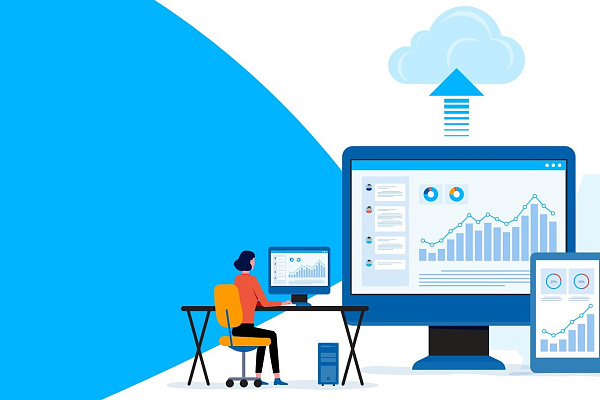In simple terms, a remote server is a remote computer that stores and processes information and performs tasks. The server is accessible over the internet. Companies use a remote server for example for storing and working with databases. The advantage of this solution is that there is no need to buy special equipment, as the connection is made using standard office tools. There is also no need for a system administrator – the remote server does not need to be maintained.
Areas of use of remote servers
A remote server is an alternative to physical equipment in a company's office. The main difference is that it offers a higher level of security because it is housed in secure data centers.
To ensure high performance, remote servers are usually equipped with powerful processors, large amounts of RAM and fast data storage.
This technology can be used to quickly organize remote work for employees. The information stored on the virtual server can be accessed by authorized users from anywhere in the world. The main requirement is access to the Internet.
Users connect as if they were on a shared local area network. Functionally, it works just like any other computer on the corporate network. When using Remote Desktop, the host machine runs the software and operating system and displays it on the client machine. The Remote Desktop software intercepts mouse and keyboard signals from the client device and sends them back to the host machine.
Advantages of a remote server

A remote server has a number of advantages for businesses:
Protect corporate information from loss
All information on remote servers in the data centre is duplicated. This means that if a server or disc containing your data, files and software fails, another server will continue the work. This ensures the smooth running of your business and constant access to the remote server.
All communication channels between your office and the remote server, as well as the contents of desktops and correspondence, are encrypted. This makes hacking and unauthorised access from inside or outside impossible. The data centre has a level of security that cannot be replicated in an office. Data centre staff do not have access to your information on the server.
No need to buy and upgrade equipment
Having your own fully-fledged IT infrastructure requires constant attention and development – buying new hard drives, computers, networking equipment. This is not necessary with a remote server. Plus, workstations need upgrading as they quickly become obsolete.
If you add up all these costs, you get a considerable sum. With a remote server, you not only save on equipment costs, but also avoid additional obligations. There is no need to check that everything is working, that servers and computers are not overheating, that there is space for new files. This is all handled by professionals.
Protecting data from human factor
If you use your own equipment, the role of the human factor increases dramatically. For example, a dismissed employee can steal client databases, and a system administrator can steal credentials, and other critical information.
A remote server is completely protected from the human factor. The need for a full-time system administrator simply does not exist. Every employee has a certain level of access. When starting the cloud desktop, they only see the information that is relevant to their job. This eliminates internal spying. You can set the level of access to individual files. For example, ordinary managers can only view the customer database, not make changes.
Simplicity and ease of use and control
There are many limitations to working with a physical server. For example, it can be difficult to monitor employee activity and organize a remote connection.
A server in the cloud offers a new level of management, control and ease of use. You can access the data stored on the server from anywhere in the world. All you need is Internet access and a password. This means your business can easily connect remote employees or move to a new location without the hassle of server room equipment.
Company managers can manage the access of their subordinates and control their actions.
Using a remote server is a familiar part of today's digital infrastructure. It is an effective solution for providing businesses with reliable computing resources, reducing costs and increasing overall productivity.
The only downside is that at low internet speeds the image can be distorted and the performance can drop. But even this problem can be resolved - all that is required is a stable communication channel and its redundancy.



